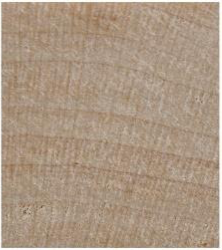What is the best wood for end-grain chopping boards?
What is the best wood for end-grain chopping boards?
At The Honest Wood Company we only use the finest hardwood, from reputable local suppliers who can trace the providence of their lumber.
There are literally thousands of wood species in the world, but only a handful are suitable for making chopping boards. There are several factors to be considered and in this article we will discuss why Maple, Cherry, Beech, Oak, and Walnut can be used where pine, cedar, and exotic woods cannot.
We will look at the physical characteristics including, durability, and toxicity, as well as the environmental concerns.
Toxicity
Very few woods are actually toxic but many can cause allergic reactions. Woodworkers are exposed to wood dust during the manufacturing process, this can be a concern as certain types of wood dust has been shown to cause skin irritation, lung problems, sensitization, and sometimes poisoning. Obviously when using a cutting board one should not be exposed to wood dust but it is important to be aware of how different woods can cause irritatons. For example the Australian Cashew Nut (Semecarpus australiensis) can cause irritant, skin lesions, and nosebleeds. Western Red Cedar in rare cases can cause irritant, sensitizer, runny nose, asthma, nervous system effects, and NPC. These are extreme examples but highlight an important point.
That is that it is important to be aware that some people are more sensitive than others, this is also why you should never use nut oils to season your wooden chopping boards. See our section on looking after your butcher’s block chopping board for more information.
Rare exotic woods can look beautiful with striking grain patterns or deep rich colours but often, as they are not widely used in the kitchen, there can be questions around how food safe they are. As woodworkers we have a reasonability to air on the side of caution when making products which come into direct contact with food.
Reclaimed wood can pose a toxicity issue as there is no guarantee as to how the wood was used or finished in its former life. Reclaimed wood can be beautiful and unique due to its age and patina. Wood taken from an old barn, fence or even wooden shipping pallets might have been exposed to toxins or treated with harsh chemicals to protect it from the elements. Creating a feature wall or TV cabinet from reclaimed wood wouldn’t pose a huge risk, but as a wooden chopping board comes into direct contact with food this is a definite no no when making any style of cutting board.
Durability
Hardwood should be used for wooden cutting boards because of its tight-grain and well, hardness. Hardwood tree classification can be a bit confusing as it does not relate to the hardness of the wood but rather the type of tree. Hardwood (which come from angiosperm trees) have broad leaves and flower, often baring fruit or nuts. Examples of hardwood are Maple, Cherry and Oak. Approximately 80% of the harvested lumber worldwide is softwood. Softwood comes from coniferous or evergreen trees and is predominantly used in construction. Examples of softwoods are pine, spruce, and cedar.
An important characteristic of Hardwood is that it has vertical “pores” that transport sap. These become visible in the end-grain of the wood. Softwood is non-porous which allows it to be stained evenly, an advantage, as most soft wood is light in colour.
Most people will know that oak is a hardwood but oak is not often used in end-grain chopping board as it has large/open pores.
Large/Open Pores
Medium Pores
Closed/Tight Pores
These large pores are visible to the naked eye and can harbour bacteria, eliminating the antibacterial advantages of end-grain construction. Closed/tight pore woods such as Maple, Cherry, and Walnut are therefore the most popular choices for high quality cutting boards, obviously this is what we use at The Honest Wood Company.
The construction of a chopping board is more important than the wood that is used. End-grain butcher block style chopping boards are far more durable than any other type of wooden chopping board. Check out our section on the benefits of end-grain chopping boards for more information.
Environmental impact
There will always be an environmental impact when working with a natural resource, it is important to acknowledge this and take responsibility for reducing our impact whenever possible. In animal welfare everyone is aware of the critically endangered, endangered, and vulnerable classifications. CITES uses this same classification for tree species. The IUCN annually publishes a Red List of threatened species which includes trees. Tropical hardwoods such as Mahogany, used in furniture making, and Pau Brasil, used to make high quality stringed instruments are some of the most endangered species.
The main causes of deforestation are cattle production or logging. All the wood used by The Honest Wood Company is certified as sustainable or renewable and comes from The Forest Stewardship Council (FSC) certified forests.
We have also chosen to partner with One Tree Plated and help reduce our impact by planting one tree for every product sold on our site.



